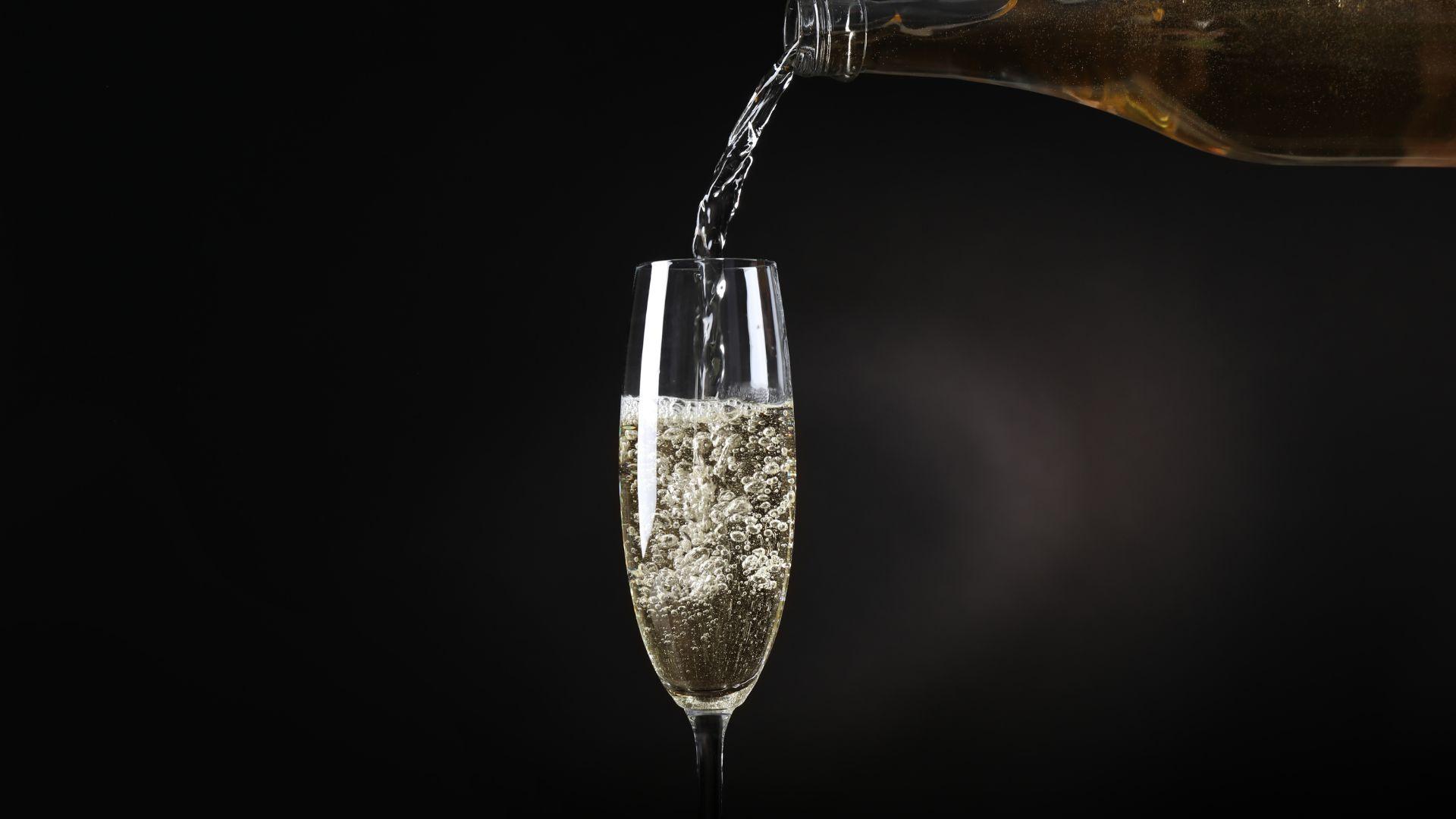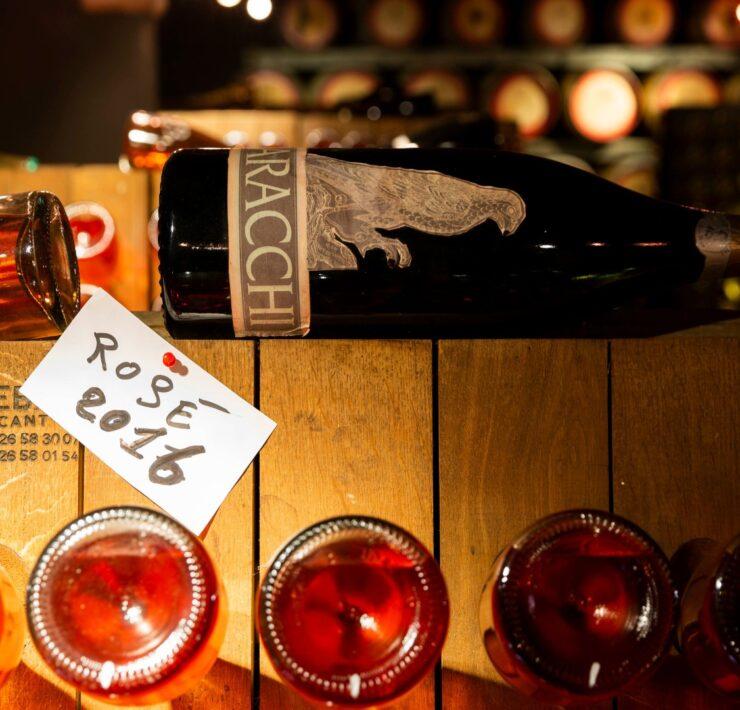Blind tasting — determining what a wine is without seeing the label — can challenge everyone from novice enthusiasts to master sommeliers. The practice is infamously tricky for still wines but can be nearly impossible for sparkling wines. Whether Sekt, Cava, Prosecco, or Champagne, blind tasting sparkling wine stumps even the experts.
SOMM TV subscribers saw this test come to life in Tournament of Bubbles. Four legends in the food and wine industries competed during the 2023 FOOD & WINE Classic in Aspen, with several struggling to distinguish between the mystery sparkling wines in front of them. Watch the trailer below.
Whether reviewing, critiquing, buying on behalf of a restaurant or wine shop, or studying for a wine exam, wine professionals typically train for blind tasting by using a checklist. The two most popular are called the tasting grid (via the Court of Master Sommeliers) and the Systematic Approach to Tasting (via the Wine and Spirits Education Trust [WSET]). These checklists use wines’ benchmark attributes, such as appearance, aromas, flavors, and structure, to help determine the answer. However, these checklists only briefly touch on sparkling wines and their differences. Blind tasting sparkling wine ultimately comes down to identifying the challenges and key markers of each effervescent fizz.
Challenges With Blind Tasting Sparkling Wine
A significant setback with blind tasting sparkling wine is that tasting courses often shy away from including it in the curriculum because it’s so difficult. For example, within WSET, blind tasting sparkling wine isn’t a requirement until the final diploma level.
“One of the biggest [challenges] is that entry or moderate level exams never talk about tasting sparkling wine,” says Jessica Waugh, a wine educator who has also passed the famously difficult Master Sommelier exam. For sparkling wines, “we have to adjust our brains in so many ways. We don’t do it on the same basis as still wines. If we did, it would be easier,” she explains.
Sparkling wine has fewer differentiators than still wines, also posing a challenge. From acidity and sweetness levels to aromas and other characteristics, still wines have varying attributes that help narrow the field. In contrast, most sparkling wines have similar qualities to one another, such as higher acidity and residual sugar levels (most are dry). Also, the bubbles often mask other structural components in the wine.
Further adding to the difficulty, is that most sparkling wines blend grapes, vintages, and barrels. Even vintage Champagne can have various components. For example, Nicolas Francois 2008 from premium producer Billecart Salmon has Pinot Noir grapes from five vineyards and Chardonnay from four vineyards. Plus, it rests on its lees for over a decade. All of these things contribute to a highly complex sparkling wine.
“Since it’s such a blended product, with reserve wines blended with early harvest juice with higher acidity, it’s so tricky,” says Noelle Harmon, Master of Wine stage 2 candidate and educator with Elevage Wine Coaching.
Key Markers for Sparkling Wine
Though limited, a few distinctive clues can help identify what’s in the sparkling glass. Bubbles, in particular, are created through the carbon dioxide trapped in the bottle after fermentation, leading to determining how the wine was made.
“The bubbles are very different in how they express themselves, based on how long the lees aging was and what vessels the aging occurred in,” says Waugh. In comparing generic Prosecco to Champagne Salon, “You’ve got huge bubbles in Prosecco that form rapidly. In Salon, you’ve got much smaller bubbles because it’s aged on the lees for ten years.”
When assessing different sparkling wines, it’s helpful to consider how they were made. The two primary methods of sparkling wine production are the traditional method (or Champagne method) and the tank, or Charmat, method. With the traditional method, the wine goes through two fermentations, one in a temperature-controlled tank and the other in the bottle. With the tank method, as the name suggests, both fermentations happen in tanks.
Traditional method wines emit bread, biscuit, and toast aromas from a process called autolysis. This process sees the yeast trapped, then dying and breaking down in the bottle. Autolytic character is a key sign of a traditional-method sparkling wine. Typically, the more intense these aromas are, the more likely the wine is from a high-quality Champagne producer that often incorporates lees contact for several years.
Another telling sign of Champagne is its racing acidity, indicative of being from one of the coolest grape-growing climates in the world. While acidity levels are generally high for all sparkling wines, they are noticeably different from a warmer climate like California. This is true even if the wine is made from the same grapes.
Finally, the wine’s fruit character and intensity can also signify its sparkling identity. “I try to focus on the ripeness of the fruit rather than trying to identify specific flavors,” says Harman. “For example, a vintage Champagne versus a sparkling wine from California. [I ask] ‘How is the ripeness of the fruit? Is it more green citrus, green apple or more golden, delicious?’ This would take me to a cooler or warmer climate,” she expands.
Tips for Blind Tasting Sparkling Wine
There are a few final things to do when facing a sparkling wine in a blind tasting that will help.
First, consider the temperature of the wine. If the wine is too cold, picking out the fruit character and other aromas will be difficult. Most serving recommendations, including WSET, cite 43° to 50°F (6 to 10°C) as the ideal temperature for sparkling wines. That’s much warmer than the average fridge temperature of 36° to 41 °F (2° to 5°C). Remove the wine from the fridge about 20 minutes before opening to get around this.
But overall, don’t over-engineer the process; keep things simple. Stick to a few key markers, like noting the fruit’s character and the bubble’s texture, to have a better chance of correctly calling the wine.







